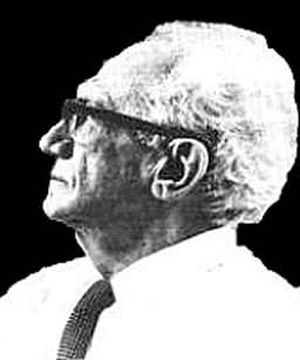Laurence Lafleur, then an associate professor of philosophy at Florida State University, wrote a critical article on Velikovsky, that appeared in the November 1951 issue of Scientific Monthly titled “Cranks and Scientists”.[1]Ralph E. Juergens, “Scientism vs Science”, in Alfred de Grazia, (Editor) The Velikovsky Affair, 1st ed. 1966, 2nd ed. 1978[2]Laurence Lafleur, “Cranks and Scientists“, Scientific Monthly, November 1951, vol. 73, issue 5. 284-290 Juergens noted that:
“Laurence Lafleur, then associate professor of philosophy at Florida State University, brought a new argument to bear against Velikovsky in the November 1951 issue of Scientific Monthly: ‘… the odds favour the assumption that anyone proposing a revolutionary doctrine is a crank rather than a scientist. ‘ Lafleur itemized seven criteria for spotting a crank.
Examples:
Test 6. Velikovsky’s theory is in no single instance capable of mathematical accuracy. Its predictions, if capable of any, would certainly be so vague as to be scientifically unverifiable.
Test 7. Velikovsky does show a disposition to accept minority opinions, to quote the opinions of individuals opposed to current views, and even to quote such opinions when they have been discredited to the point that they are no longer held even as minority views. For example, we may cite the notion that the earth’s axis has changed considerably.
“So Lafleur concluded that Velikovsky qualified as a crank ‘perhaps by every one’ of these test. But having established this ‘we must still deal with feeling, first, that scientists should have attempted to refute Velikovsky’s position, as a service both to him and to the public… ‘ Thus the professor acknowledged that much of earlier criticism – thousands of words printed in the span of more than a year and a half – was denunciation rather than refutation. But in his own attempt to perform the recommended ‘service, ‘ Lafleur, even with the aid of astrophysical theorems contrived for the occasion, fared no better than the scientists. On the assumption that an electroscope would detect it, he denied that the earth carries an electric charge. (No scientist corrected, in print, this mistaken notion or any other wrong statement by any critic during the entire Worlds in Collision controversy.) Lafleur also claimed that an approach between two celestial bodies close enough to bring their magnetic fields into conflict must inevitably bring about collision, evaporation, and amalgamation of the bodies. “
References
| ↑1 | Ralph E. Juergens, “Scientism vs Science”, in Alfred de Grazia, (Editor) The Velikovsky Affair, 1st ed. 1966, 2nd ed. 1978 |
|---|---|
| ↑2 | Laurence Lafleur, “Cranks and Scientists“, Scientific Monthly, November 1951, vol. 73, issue 5. 284-290 |
